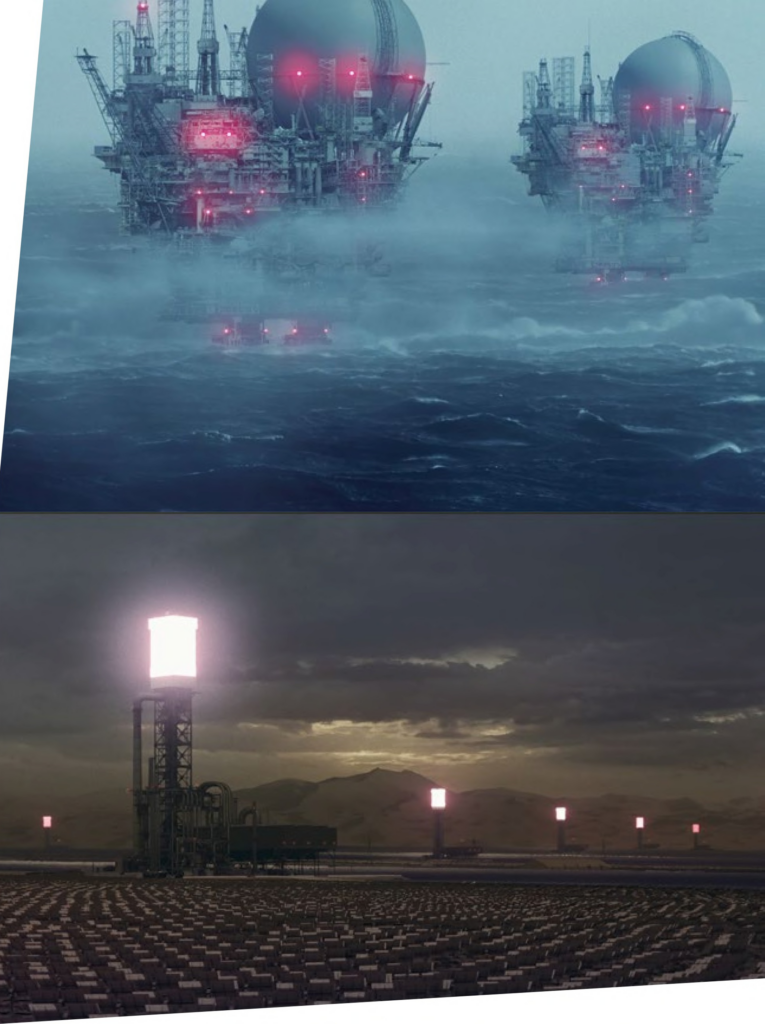LIAM YOUNG
He was born in 1979 in Brisbane, Australia, and lives and works between Los Angeles in the United States and the British capital, London
The Great Endeavor
2023

Speculative architect, production designer, and director Liam Young thinks on a planetary scale. A visual consultant for television and film, he also creates his own immersive films and installations, which transport us to possible worlds of the near future. The imagery and footage for his propositional earthscapes build upon the research of his nomadic studio, Unknown Fields, which documents the impact extractive processes have on far-flung lands—from Madagascar sapphire pits to Amazonian oil fields—often with the help of autonomous drones or remote sensing technology. Young is an educator and author as well, and currently directs the master’s in fiction and entertainment at SCI-Arc in Los Angeles.
In The Great Endeavor (2023), Young presents a stubbornly optimistic proposition to terraform our collapsing planet. Beyond curbing or reducing carbon emissions, environmental scientist Holly Jean Buck, the short film’s science consultant, advocates we “decolonize the atmosphere” by removing greenhouse gases entirely. What if an enormous carbon-capturing infrastructure were built to mineralize carbon dioxide into desert rock, or inject it beneath the seabed? What if this were the largest engineering project ever, matching the scale of the international fossil fuel industry, but wholly powered by renewable energy?
With sweeping pans and long takes, Young highlights a giant, machine- like edifice being towed by ships to rise, like a leviathan robot savior, from the crashing waves. The hyperrealistic, coldly gray steel structure, outlined by blinking red lights, ironically resembles an oil rig, except ecological rescue is in action here. Across the endless ocean, constellations of tidal turbines spin; in dusty deserts, solar panel fields glimmer like dragon skin. Young’s “new technological sublime” hums along to “a new planetary workers’ song”: the pulsing, increasingly loud chorus of multi- tracked voices underscores new labor’s invisibility—human presence is only implied here, presumably operating the massive machineries that save us from ourselves. (Workwear imagined for these unseen inhabitants is on view in Exhibition Hall B1.) Young is no romantic dreamer: in its very title, The Great Endeavor acknowledges the unprecedented degree of global collaboration needed for this undertaking. In his visual materialization of solutions, currently being researched, he challenges us to make the seemingly impossible an urgent reality.


